Basic facts about Islam
- Islam is the second largest religion in the world.
- There are 2.2 billion Muslims across world (Henderson 64).
- Muslim majority countries include Indonesia, Pakistan and India ( Henderson 64)
- Islam has rules which govern different aspects of faithful lifestyles.
- Islam is a comprehensive religion and thus promotes wholesome growth of followers.
- Some of rules of Islam include the six pillars of faith and five pillars of faith.

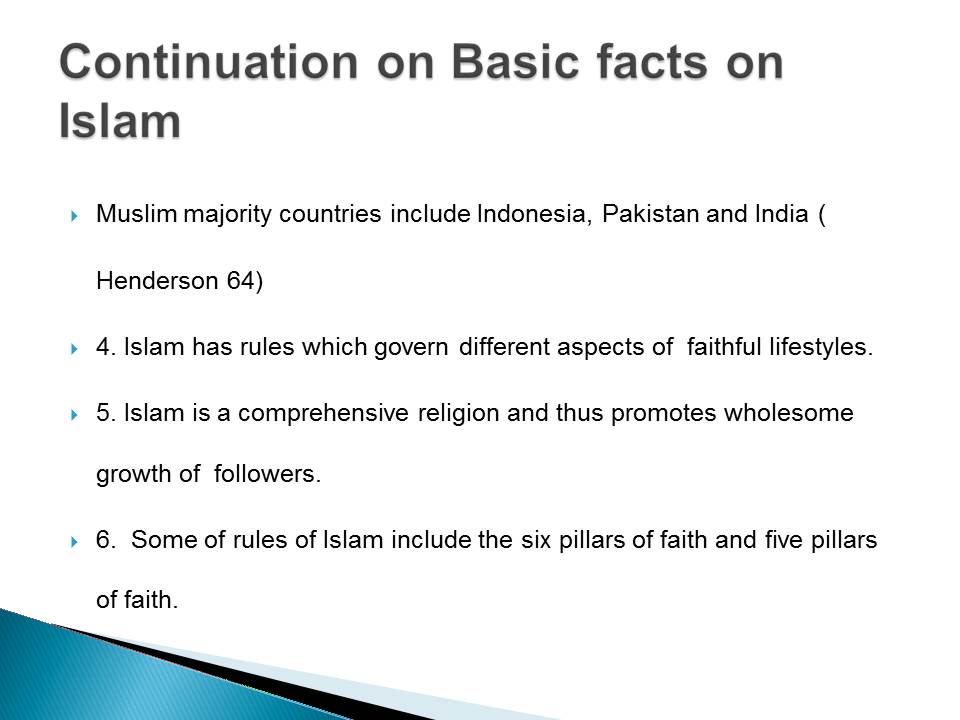
Islam Religion Demystified
- Increased scrutiny on Islam especially in the post 9/11 era. Among the factors contribute to the above phenomenon is the rise of radical Islamists (Imam Afroz para. 3).
- Increased stereotyping in the post 9/11 era has led to cases of discrimination against Muslim faithful.
- The central theme of Islam as carried in all beliefs is peaceful co-existence and respect for other people’s religion.
- Need for more information on Islam including Islamic belief and practices. As such people will be in a position to associate some of their daily activities with Muslim practice. Similarly, people are in a position to understand some positive Muslim practices which contributes to a shift to positive image of Islam.
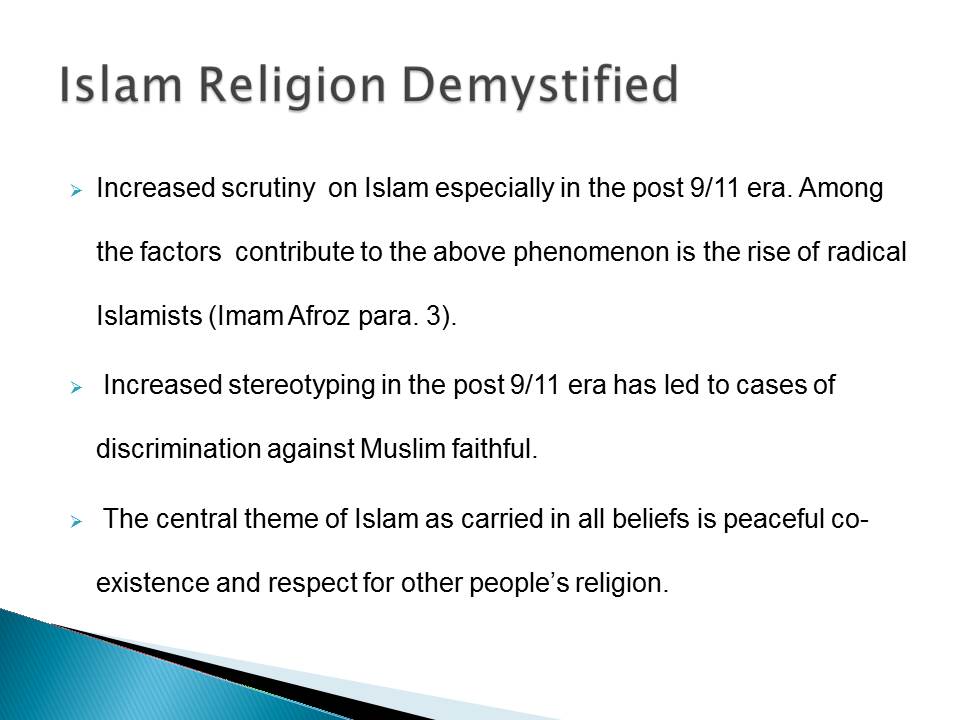

Five Pillars of Islam
First pillar of Islam – Shahaadah or Kalima. This basically is a faith testimony and is the foundation of Islam. Encompasses testifying to Allah (God) divinity. Similarly, Muslim faith encompasses professing Prophet Muhammad as Allah’s sole messenger.
The Shahaadah is recited to newborn soon after birth. Also, new converts to Muslim are expected to learn the Shahaadah. Thereafter, they should recite it as part of their faith.
Second pillar – Salah or prayer. Through prayer, Muslims believe their connection to Allah is strengthen. The Salat is performed at specific times of the day.
There are specific words and actions associated with prayers. Major themes of the prayers include forgiveness , guidance and self discipline.
Third pillar – Zakah or giving of alms. Islam puts emphasis on collective responsibility ensuring everyone’s wellbeing.
Advocates for increased sharing with both Muslims and non-Muslims.
Under the religion , this is seen as purification process which is also the implication of the word “ Zakah”.
Fourth pillar – Sawm or fasting. Muslims are expected to fast in the holy month of Ramadan.
Includes refraining from certain activities including eating and sexual relation.
There several advantages associated with Ramadan. This includes promotion of healthy eating habits through increased self discipline. This translates to a healthy lifestyle
Fifth pillar – The Hajj or pilgrimage. Muslims are expected to make a pilgrimage to Mecca at least once in their lifetime.
All Muslims are expected to make during their pilgrimage.
Involved several rites including going round the Kabbah seven times.

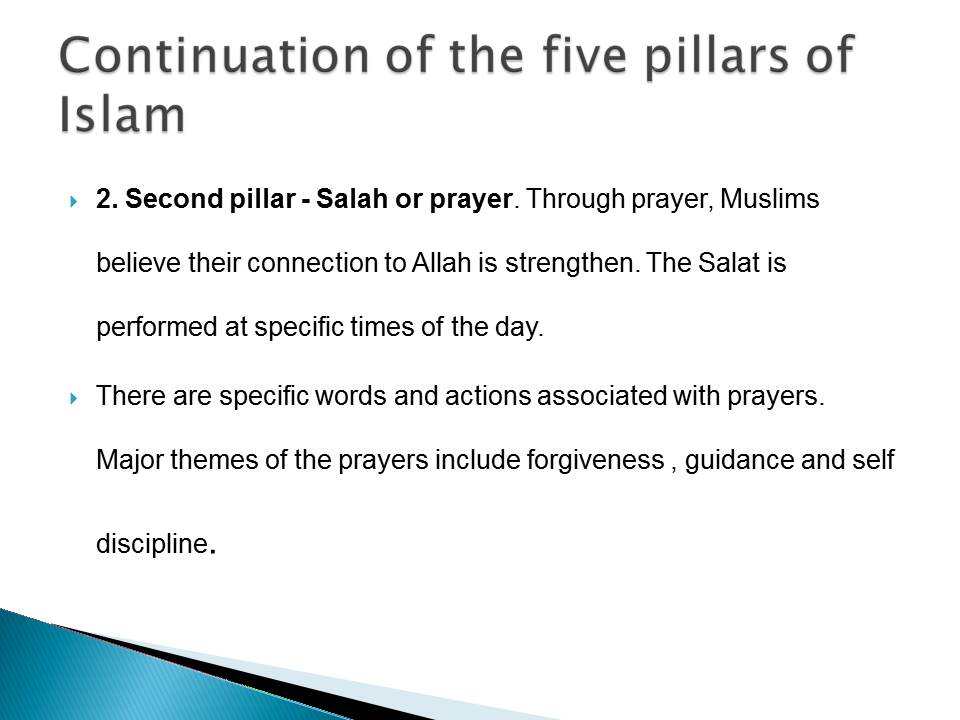
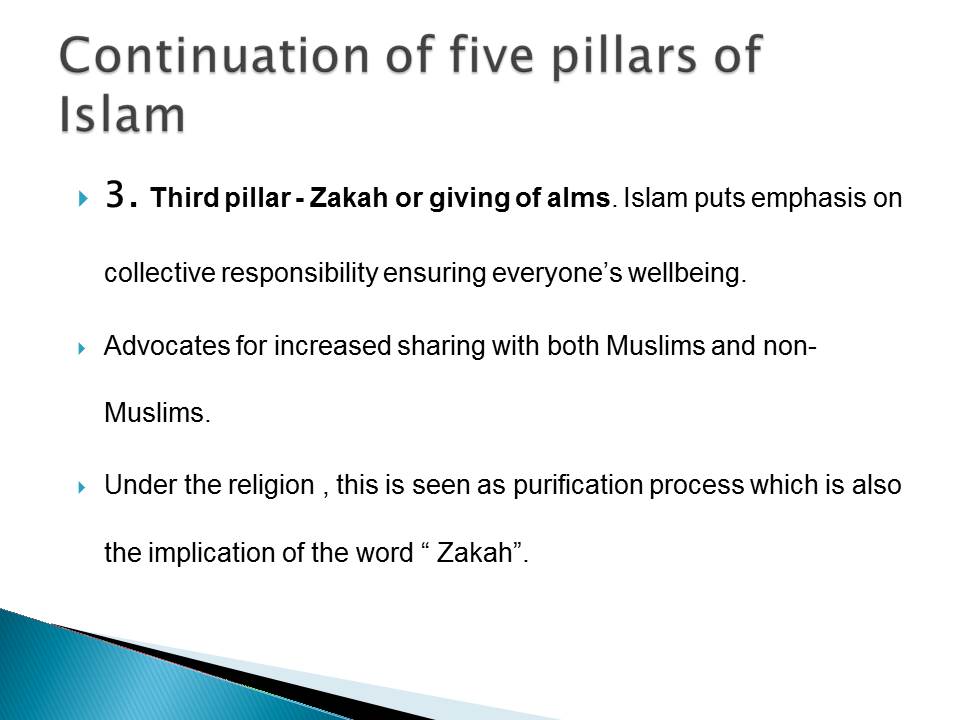
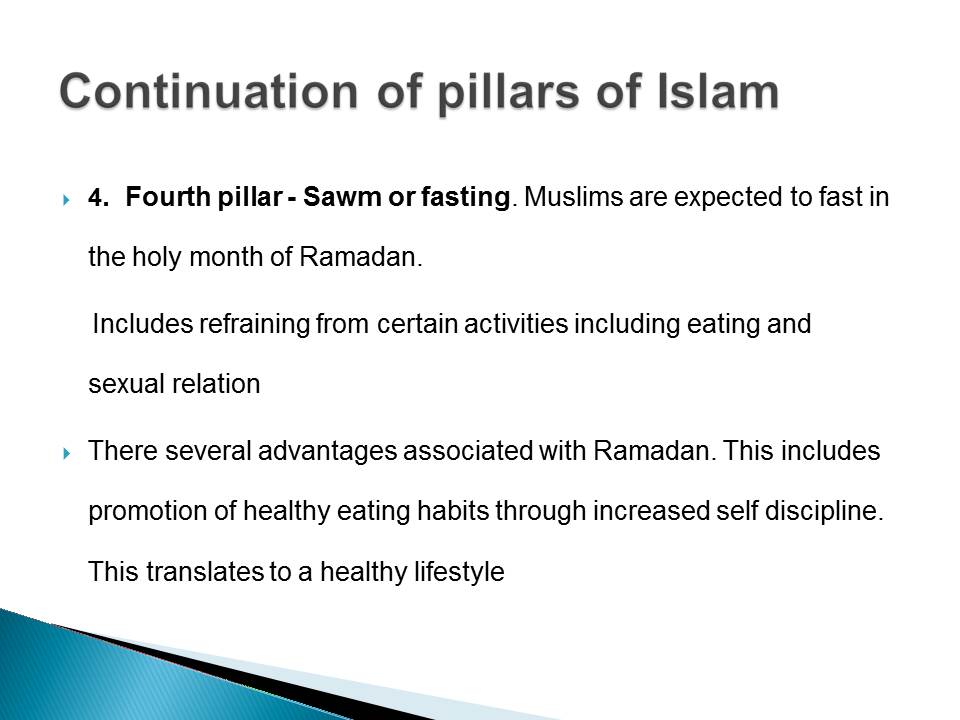
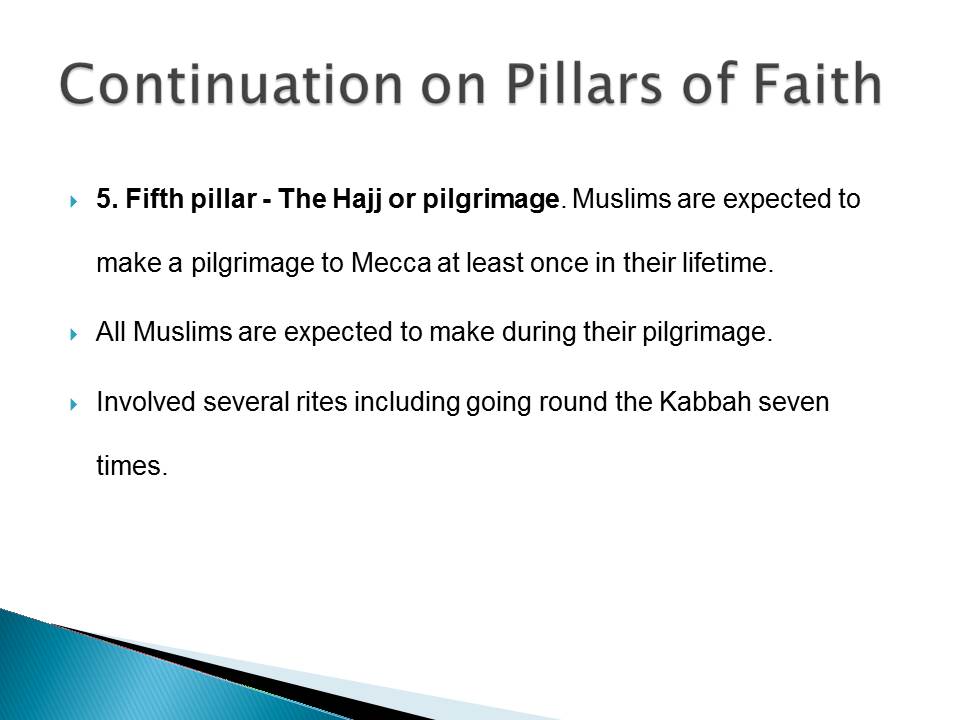
Six Pillars of Faith in Islam
- Belief in the unity of Allah
- Belief in Allah’s Angels.
- Belief in Allah’s books.
- Belief in prophets.
- Belief in the day of judgment.
- Belief in the decrees of Allah.
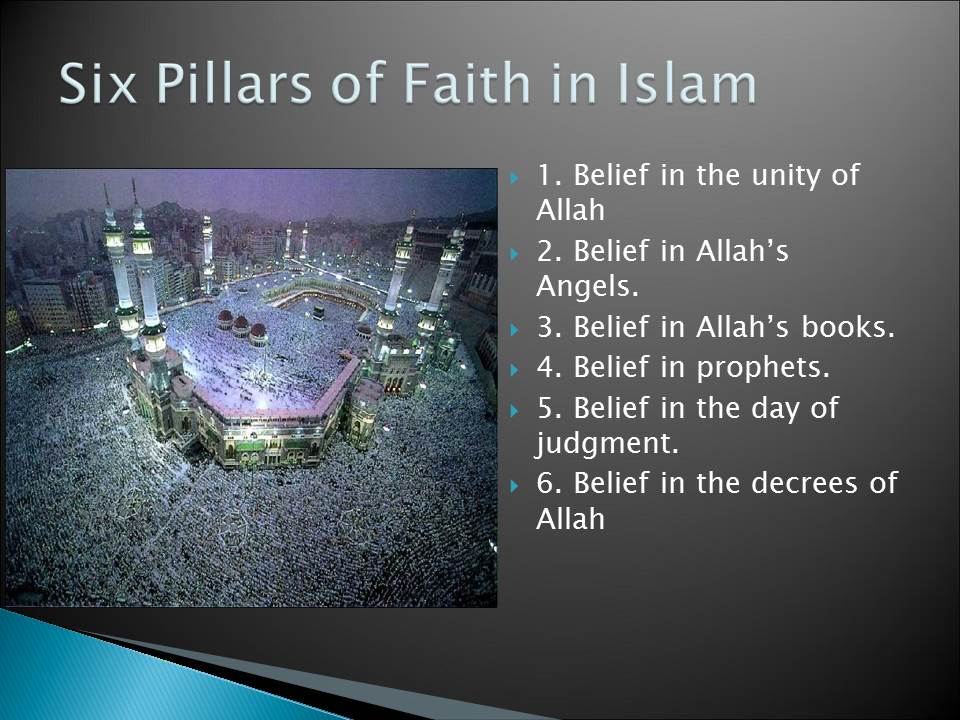
Discussion on Six Pillars of faith
First pillar of faith in Islam – Belief in one God, Allah. This pillar of faith lays foundation to Islam where all faithful regardless of race, tribe of country believe in one supreme God, Allah.
- Allah’s superiority is expressed in the Quran. Quran , 112:1-4 indicates that there is only one God.
- All Muslims are bound to worship Allah.
- One benefit from the above pillar of faith is increased unity among Muslims across the globe.
- Unity cuts across classes and races.
- Muslims are increasingly aware of each other’s needs and this is a tool used towards uniting Muslims across the globe.
Second pillar of faith – Belief in Allah’s angels. Allah’s angels act as intermediaries between Allah and his worshippers across the globe.
One of the most significant angels is Djiril (Gabriel) who brought the holy Quran to Prophet Muhamad.
Third pillar of faith – Belief in revealed books. Requires Muslims to believe in several books.
- Books include the Quran, Torah and Psalms.
- Books guide Muslim faithful into understanding requirements of Allah and also governs the relationship between Allah and Muslim.
- faithful.
Fourth pillar of faith – Belief in Prophets. Prophets include Jacob , Isaac , Jesus and Ishmael, Moses , Noah and Abraham.
Also, believe that Prophet Muhamad was the last prophet sent by Allah.
Believe that prophets do not share in the divinity and thus were normal human beings
Fifth pillar of faith – Belief in day of judgment. This is belief in after life. The last pillar of faith is the belief in decree of evil and good .
Allah outlines good and evil deeds where Muslim faithful are required to follow such regulations.
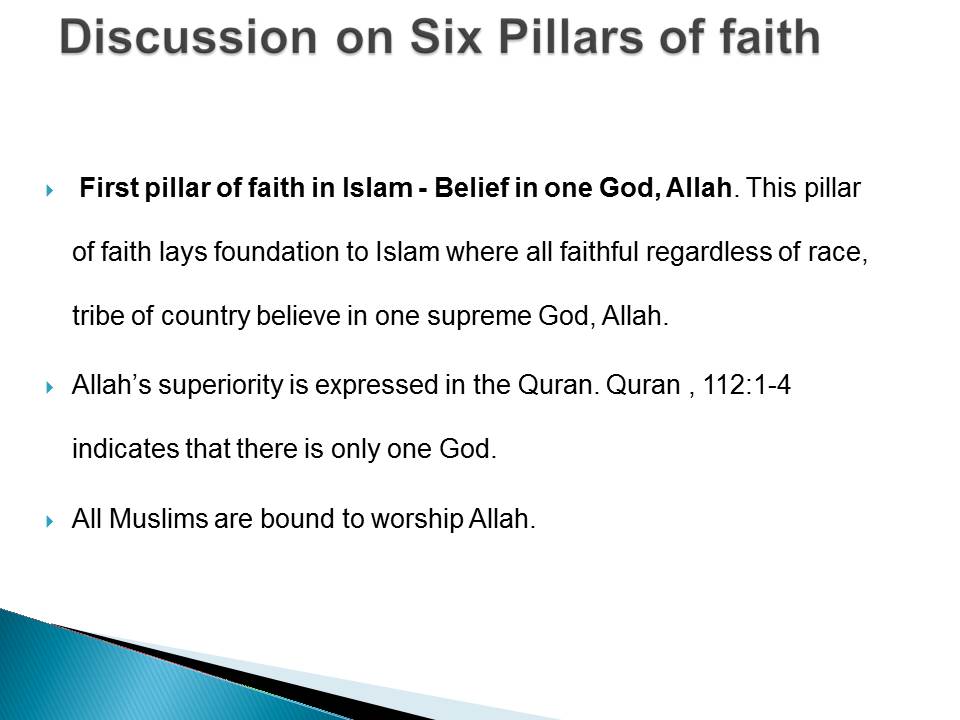
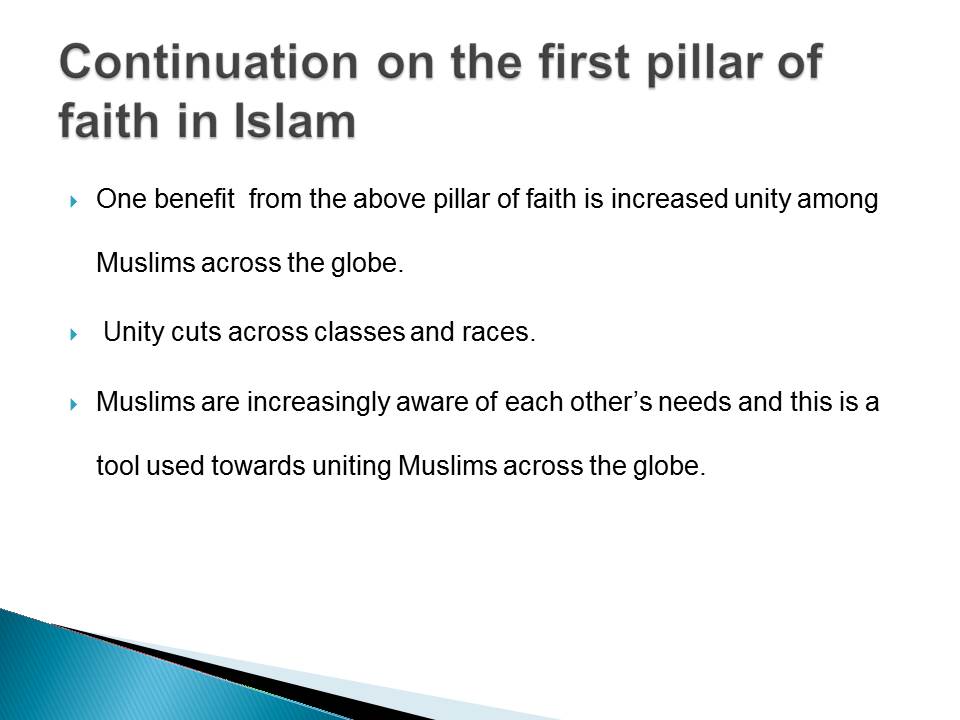
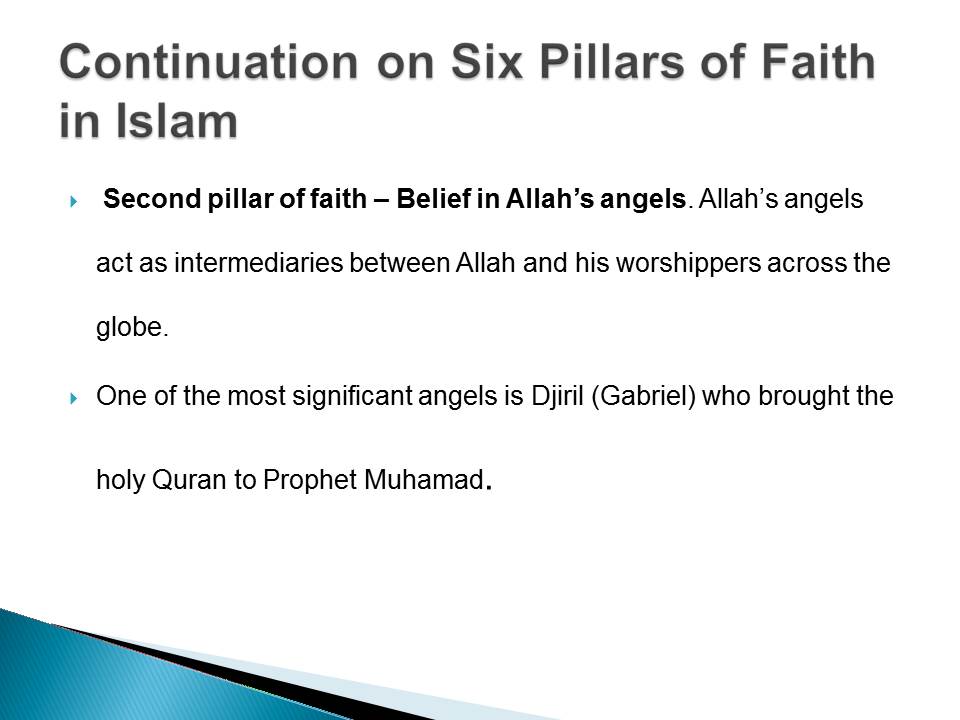
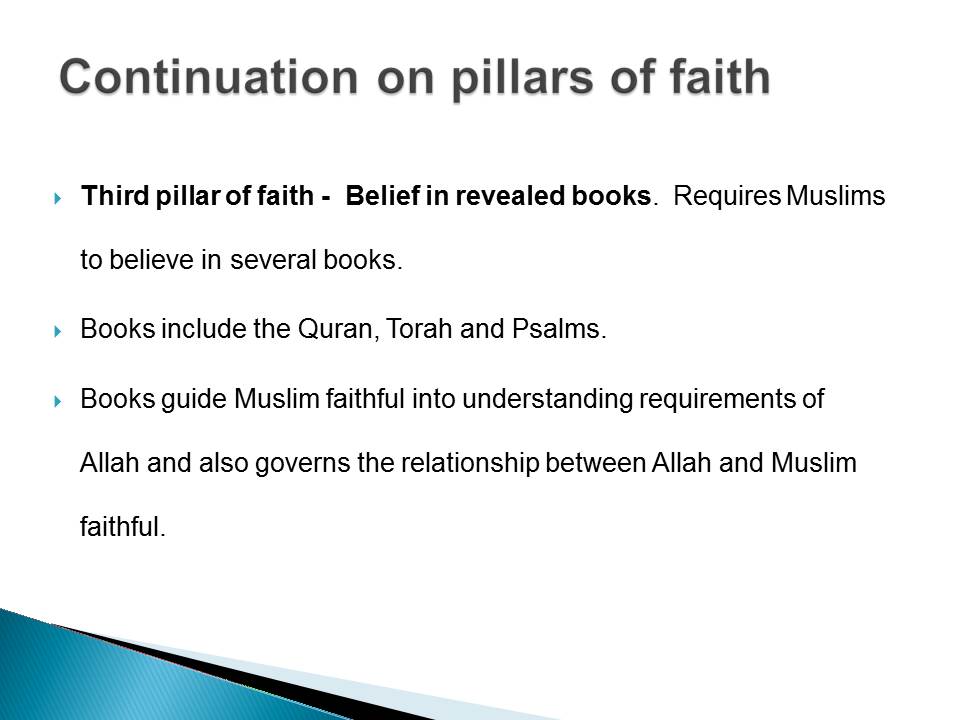

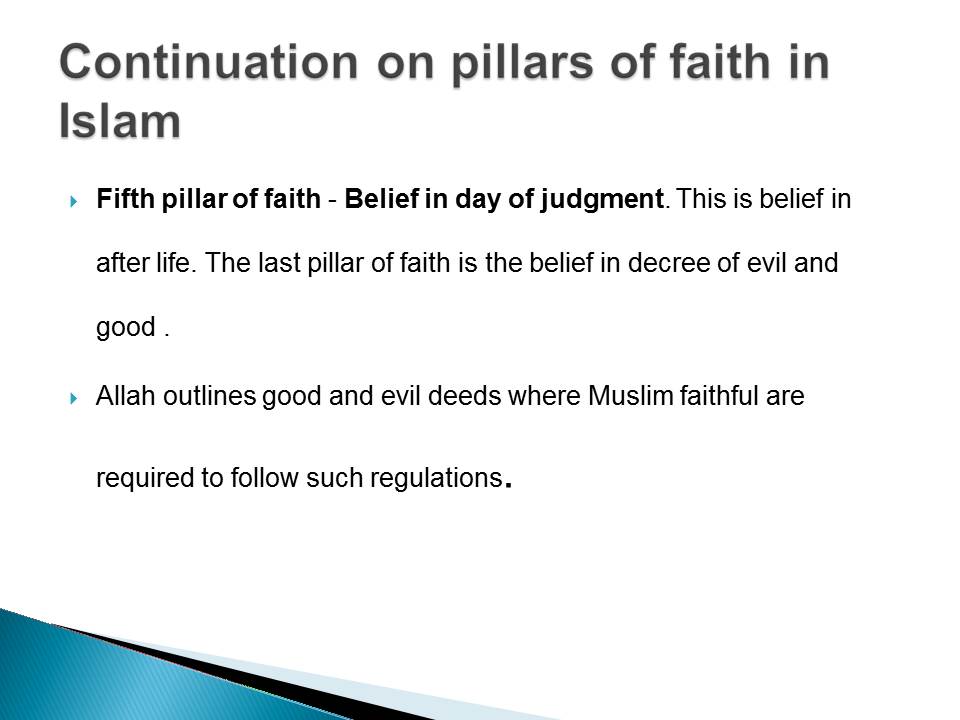
Islam and Banking Practice
Emergence of Muslim majority countries such as India puts increased emphasis on banking practice.
Products must be Shariah compliant.
Similarly, products must address the need of the clients.
Under Islam, all bank operations are allowed.
Interest on any of the bank products is not allowed as it contradicts some of Islam’s teachings and belief. More specifically, interest on bank products contradicts the third pillar (Huda 6).
Muslims are not expected to gain profits from areas in which they haven’t invested either physically or fiscally. More banks such as HSBC have introduced branches to cater for such clientele.
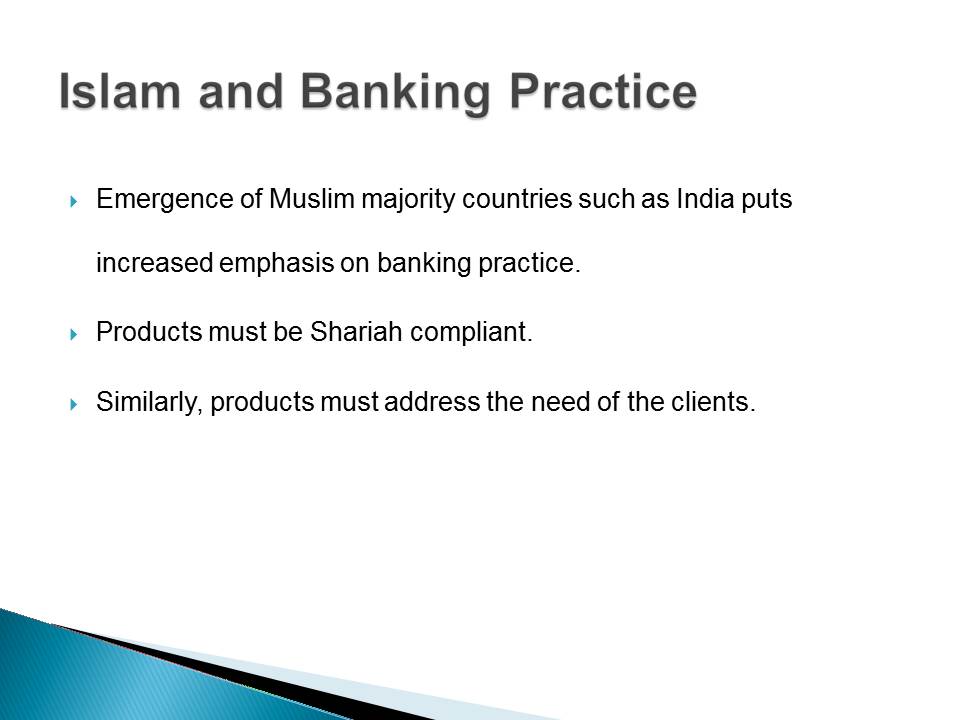
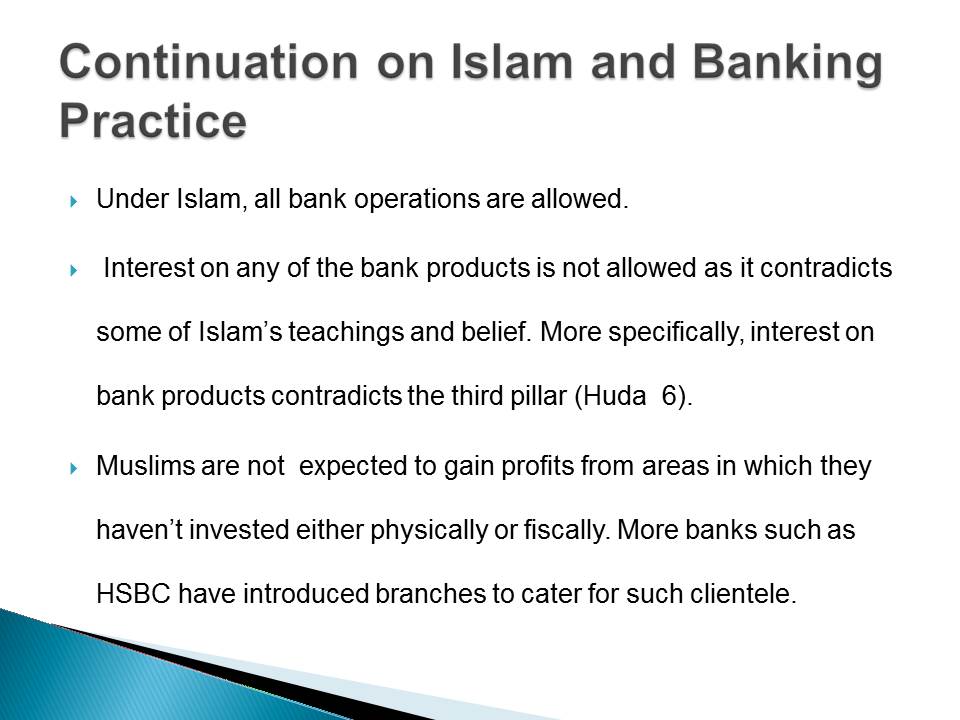
Islam and Clothing
- Clothing especially among Muslim women has always been a source of controversy.
- Islam prescribes wearing of such things as hijab for women.
- The that infiltration of designers into this market has led to increased freedom among women to wear different hijabs (Cheriff 4).
- Hijab come in many colors where women are in a position to choose from such colors.
- Increased advocacy for decent dressing in Islam is not supposed to be a hindrance towards expressing an individuals sense of taste.
- Muslim clothing has also, become a source of inspiration which is being adopted by designers. Khalil indicates the these designers are in the mainstream fashion industry.
- This is useful tools that can be used to fight stereotypes.
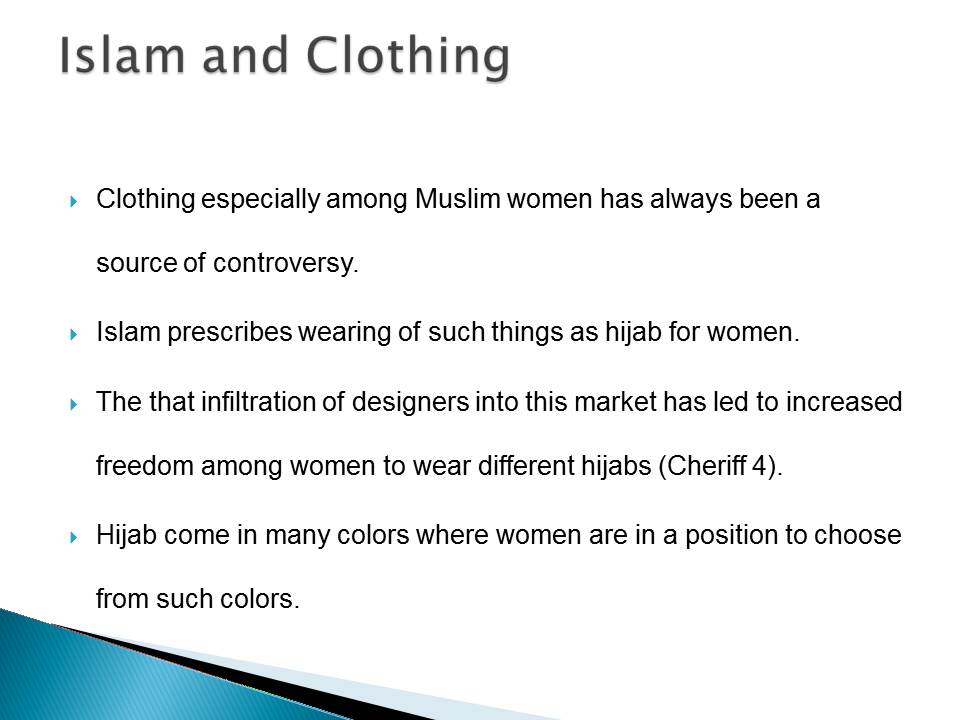
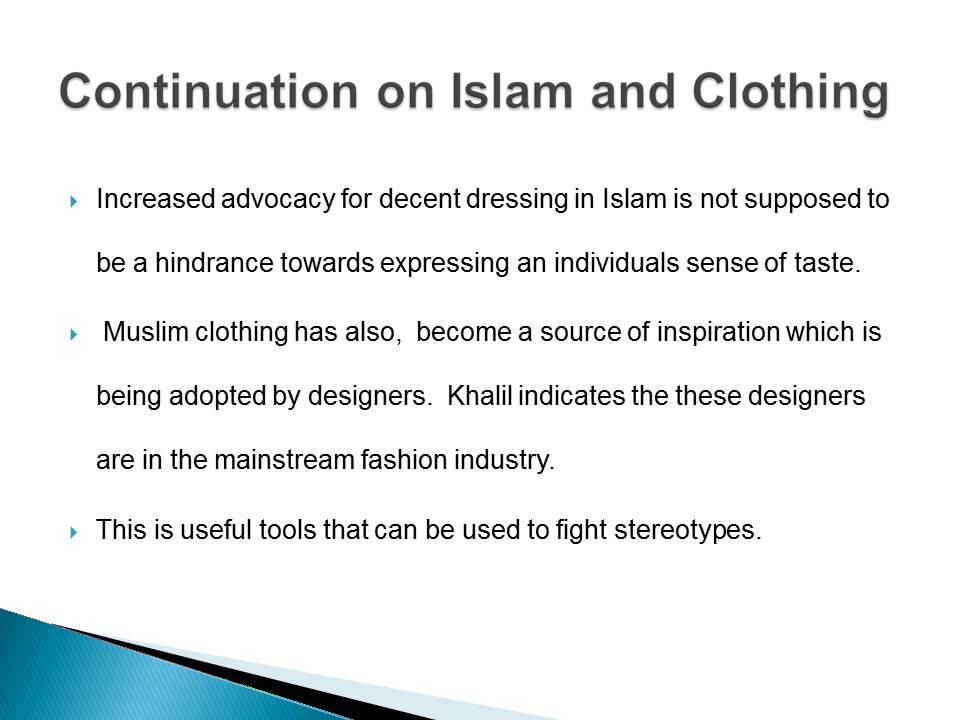
Islam and health
- Muslims observe high standard s of cleanliness. This is reference to Prophet Muhammad increased regard for cleanliness.
- Muslims have healthy eating habits. The Ramadan for example serves as period of reflection which encompasses such habits.
- Continuation on Islam and health
- According to the Islamic bulletin, there are several healthy eating habits advocated for in Islam. This include;
- Eating slowly so as to chew the food completely.
- Eating adequate food.
- Above regulations are consistent with modern day advocacy towards healthy eating habits.
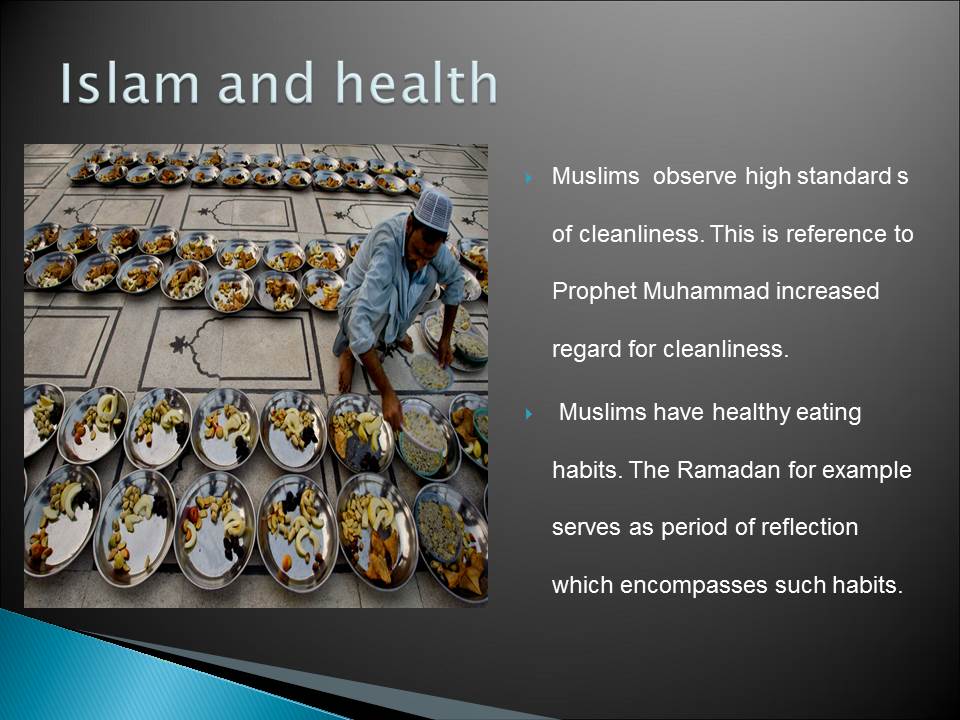

Islam and the Media
The media is overwhelmed by extremists’ activities.
Positive attributes of Islam include promotion of healthy lifestyles and promotion of peaceful co-existence.
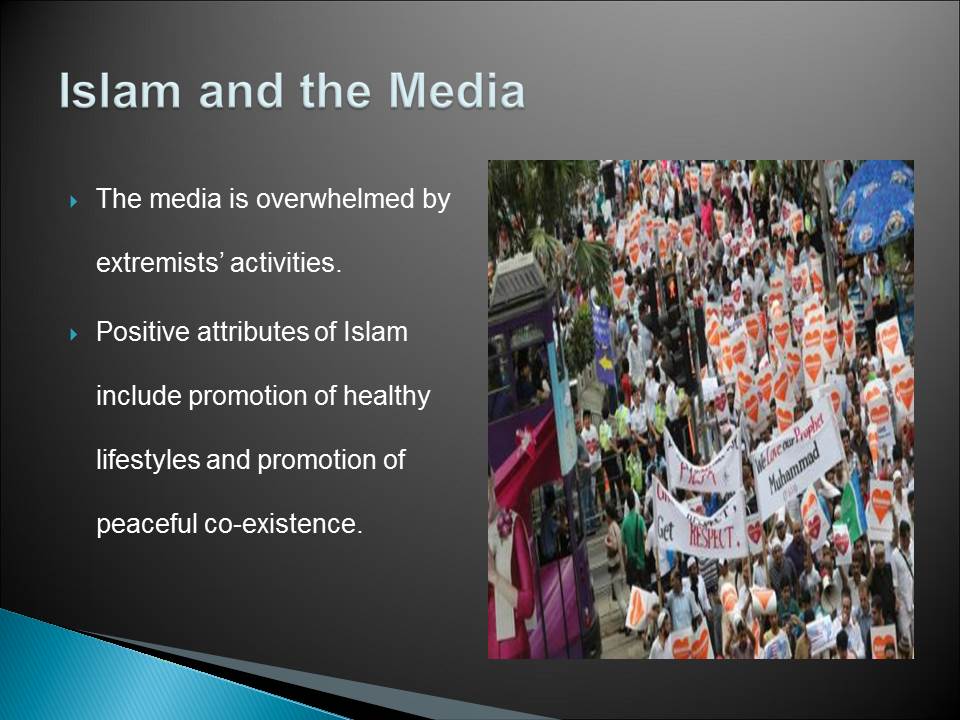
Islam and Contemporary Art
Music
Music is a part of Islam heritage.
Different genres of music exists in Islam , where music accompanies different ceremonies.
Ceremonies include wedding and burial ceremonies.
Several things are prohibited under Islam specifically on music. Music promoting such things as adultery and other vices such as theft is prohibited under Islam. This ensures that people co-exist peacefully without influence of music towards indulging in such vices.
Modern music has incorporated political messages used to communicate on various social issues affecting the society.
For example , music played a critical role in the Arab uprising. The period saw the toppling of leaders in Muslim dominated countries including Egypt and Tunisia.
Movements advocating for change of leadership used music as a the major tools of communication
Photography and painting
There are varied opinions related to Islam and photography and painting.
Ali states that photography in Islam is allowed as long it’s not harmful and doesn’t contradict major teachings under Islam.
Photographs of animals and human beings should not be publicly displayed.
Similarly, explicit photographs and paintings are prohibited in Islam. This is because such photographs promote bad morals amongst Muslim faithful.
Poetry and Sculptures
Poetry is part of Islam and it addresses both religious and social issues. Poetry is used to address emerging issues in Muslim dominated societies.
Issues include family planning and domestic violence.

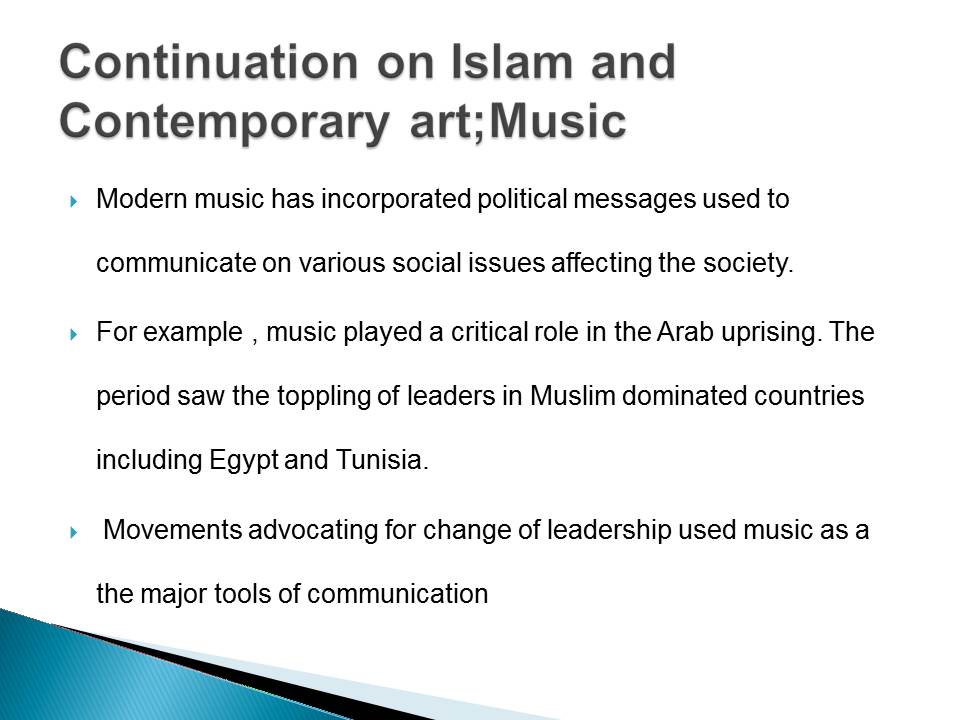
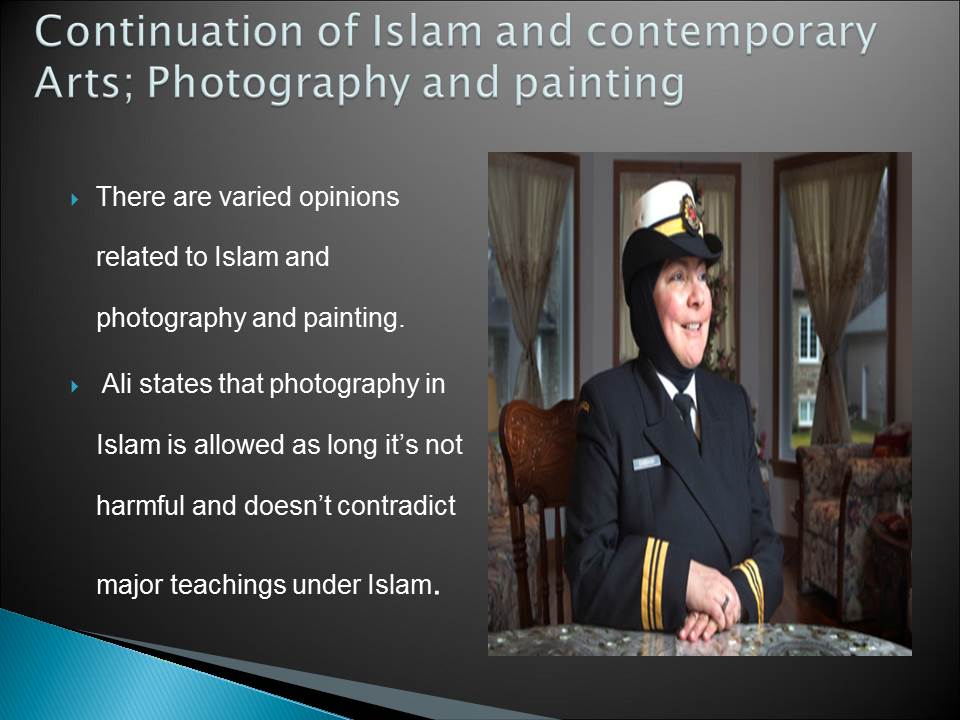
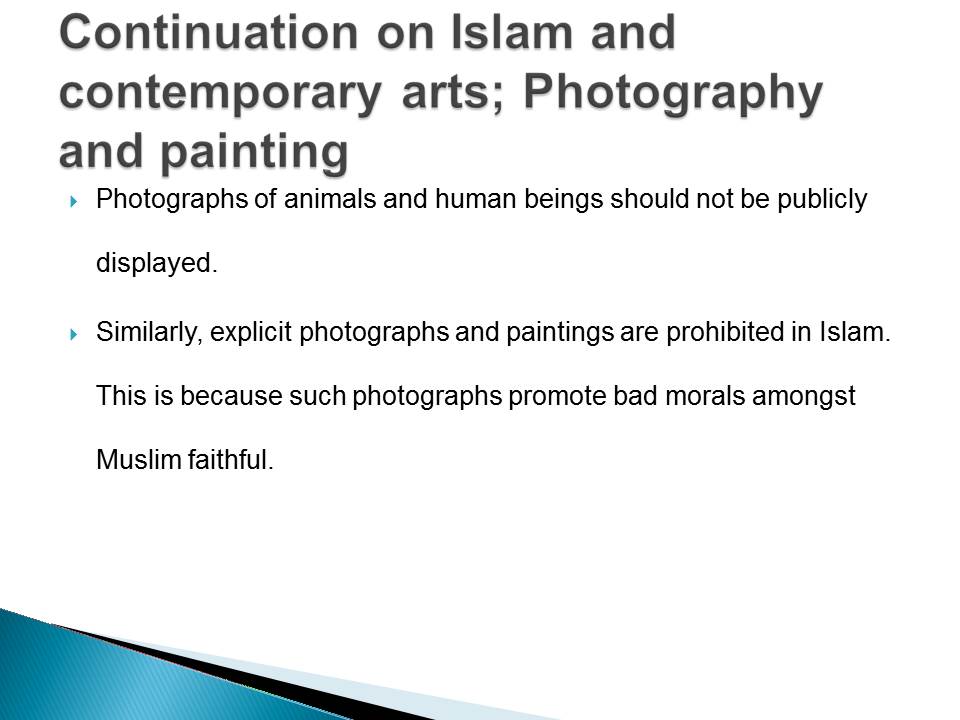
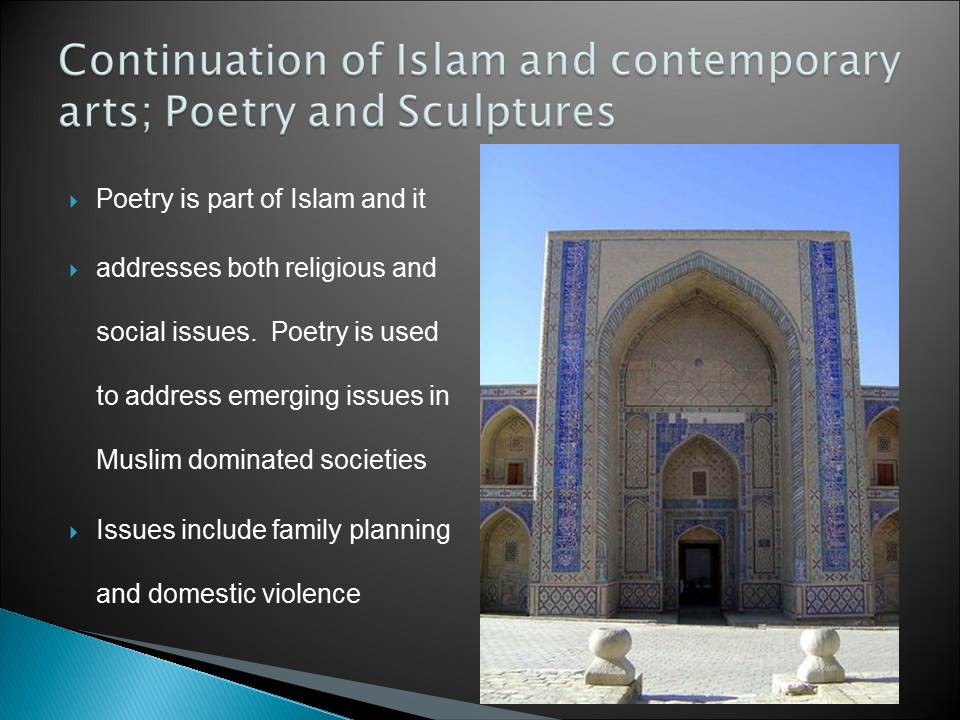
Gambling and Islam
Gambling among Muslims is prohibited.
Gambling is associated with several things including increased dependence on luck for earnings.
Also ,promotes such things as hatred among players and also diverts attention from such things as Salah.
Linked to other things including crime and suicide in Islam.
Gambling is heavily prohibited and thus faithful is encourage to avoid the vice.

Islamic law
The primary law in Islam is Shariah law.
Shariah law enforced by Kadhi courts. Courts are charged with the responsibility of settling civil cases in Muslim dominated regions.
Sharia law has come under increased scrutiny from human right organizations across the globe (Shaimaa para. 5).
In Afghanistan for example, the Taliban , before the topple of its regime, subjected citizens to such sentences as stoning.
}Such cases have led to misinterpretations of Shariah law and thus the law has been seen as unjust to some minority groups including women. Shariah law is used to settle such things as divorce cases. Both parties are given a chance to express their grievances (Souaiaia 347). A ruling is given based on the information given from both parties in the case. This follows traditional judicial hearings in other communities.
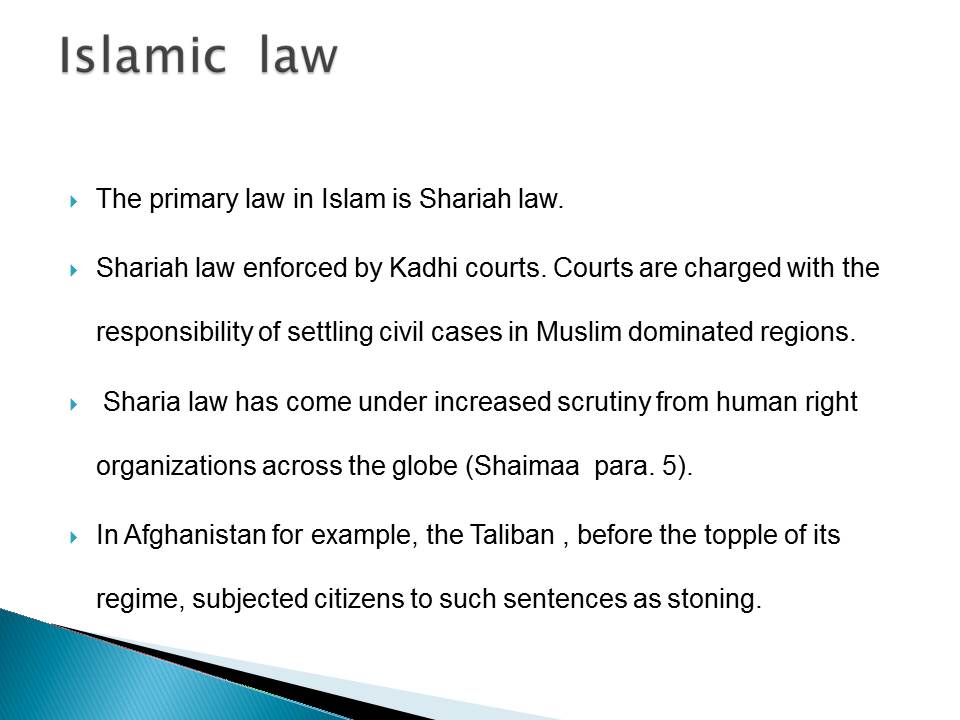
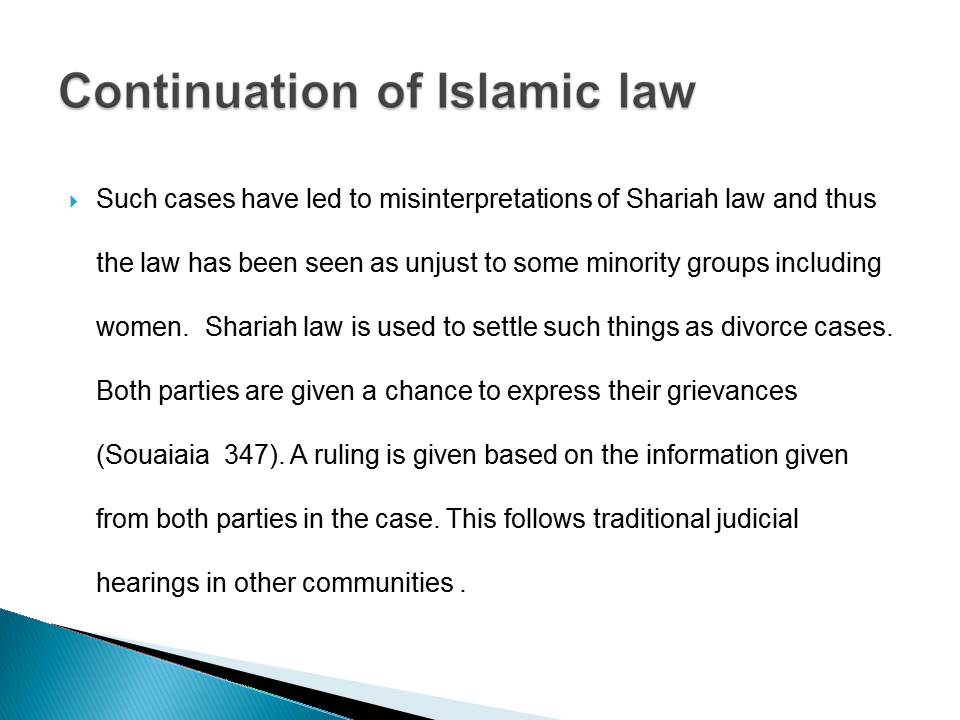
Islam and Education
Islamic education is carried out in Madrassas.
Children from the ages of 4 are able to attend madrassas.
The main objective of madrassas is to ensure that students embrace Islamic belief and consequently lifestyle.
A curriculum for madrassas exist but is dependent on different regions and countries.
The curriculum divides learning material depending on such things as the developmental stage of the learners.
Learners in institutions of higher learning handle increasingly complex material including philosophy, law and medicine.
Graduates from madrassas become Imams who are worship leaders in mosques. Also, women study separately from the men.
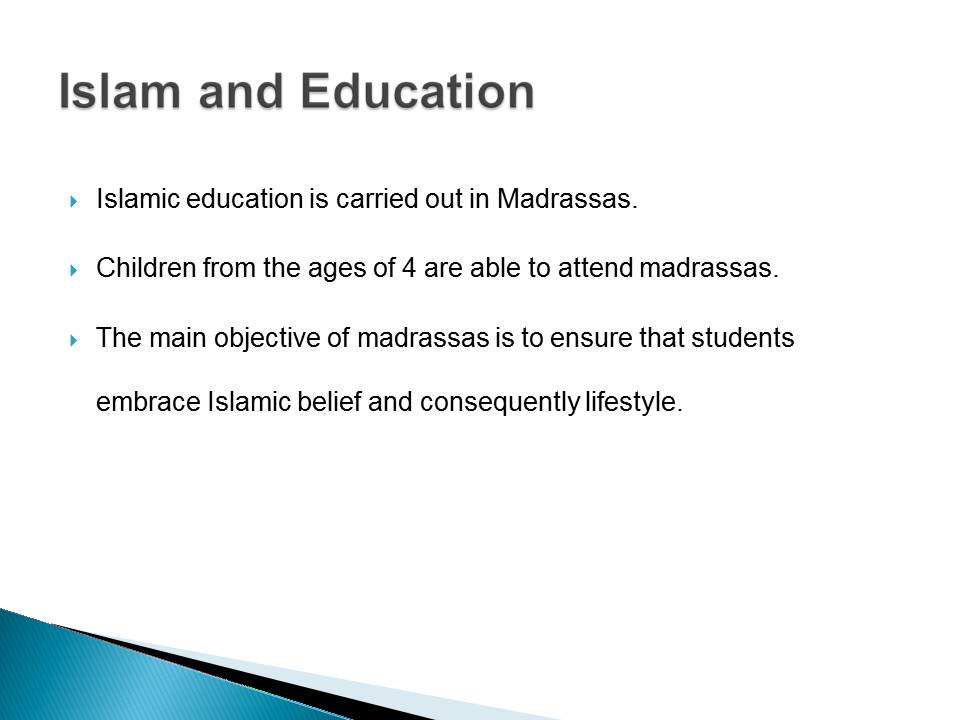
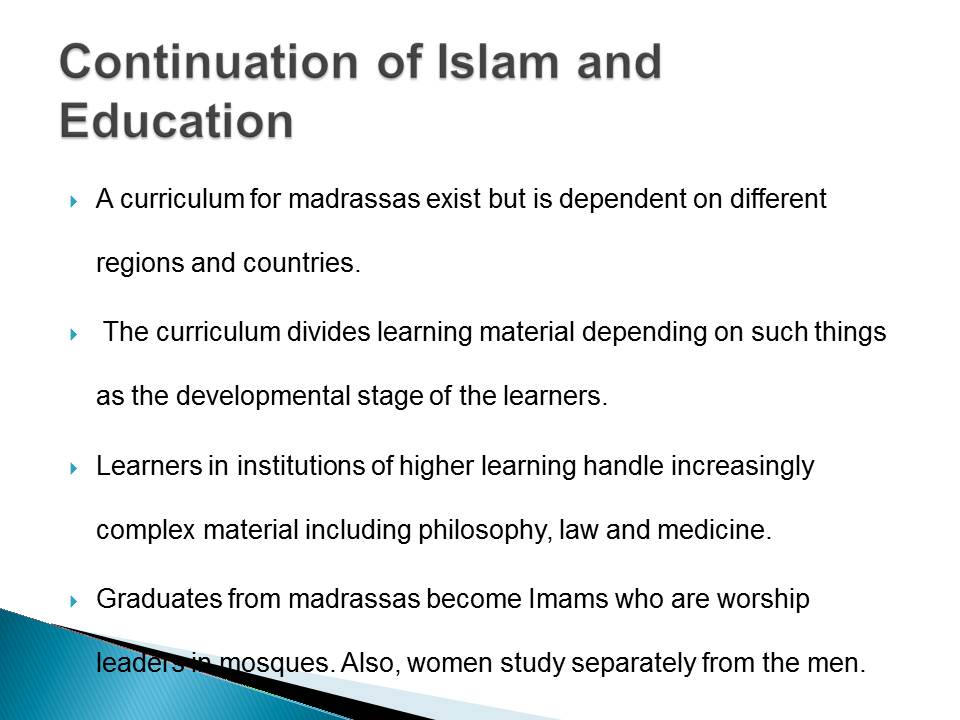
Conclusion
- Islamic belief acts as a guide in different aspects of life.
- The beliefs lay the fundamental basis from which Muslims are in a position to interact with fellow Muslims and Non-Muslims alike.
- Islamic belief is comprehensive as it addresses issues such as charity and peaceful co-existence (Islamic Bulletin 4).
- Islamic belief clearly outlines the acceptable and unacceptable behavior under Islam.
- All people including new converts have a clear understanding of requirements under their new faith.
- Madrassas expound on such things as philosophy and law giving insight into controversial topics that fall under the above categories
- Islamic beliefs promote ideals that are consistent with modern lifestyle including healthy eating habits and fashion
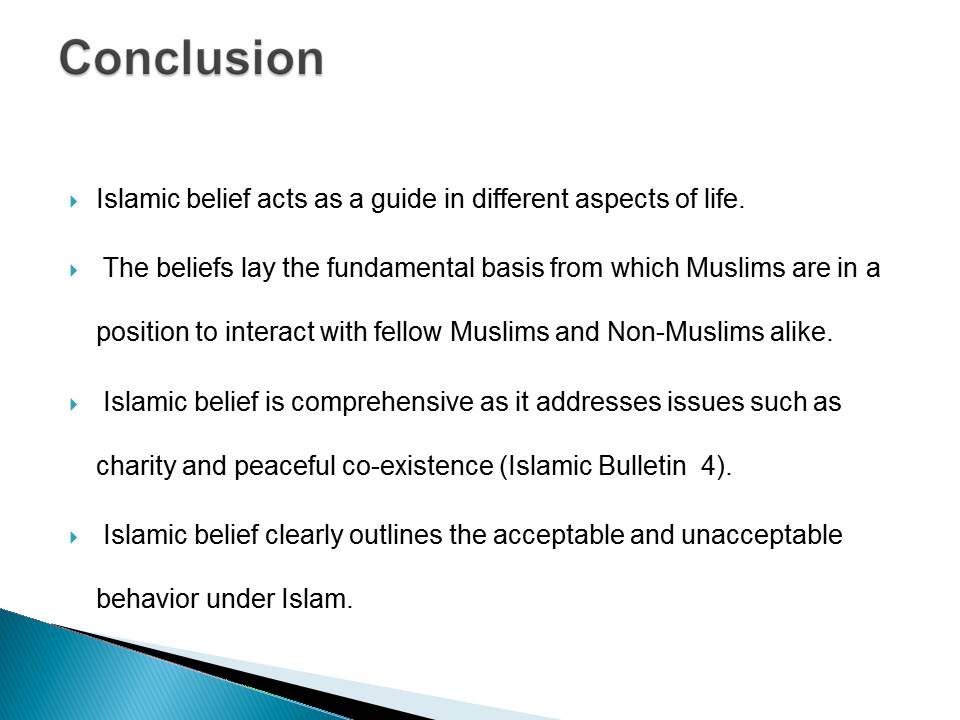

Works Cited
Henderson , Shirley. 2010. Journey to Allah. 2010. Web.
Huda, Christine. The Everything Understanding Islam Book: A complete guide to Muslim beliefs, practices, and culture, New York: Everything Books, 2009. Print.
Imam Afroz, Ali. n. d. Is photography prohibited in Islam? n. d. Web.
Islamic Bulletin 1998. Islamic Diet and Manners. 1998. Web.
Shaimaa, Khalil. 2010. Muslim designers mix the hijab with latest fashions. 2010. Web.
Souaiaia, Ahmed.”Reasoned and Inspired Beliefs: A Study of Islamic Theology.” Muslim World 97.2(2007):331-349. Print.